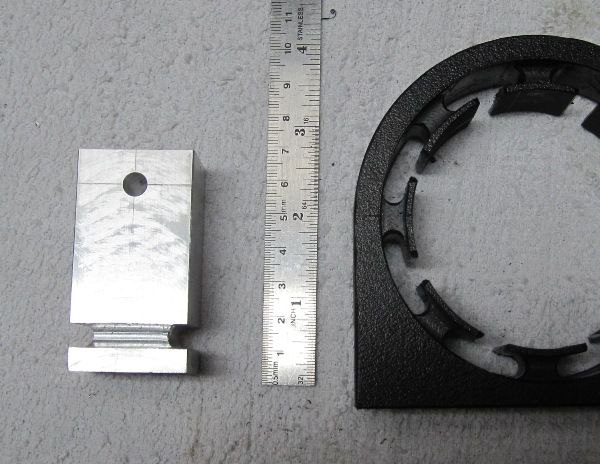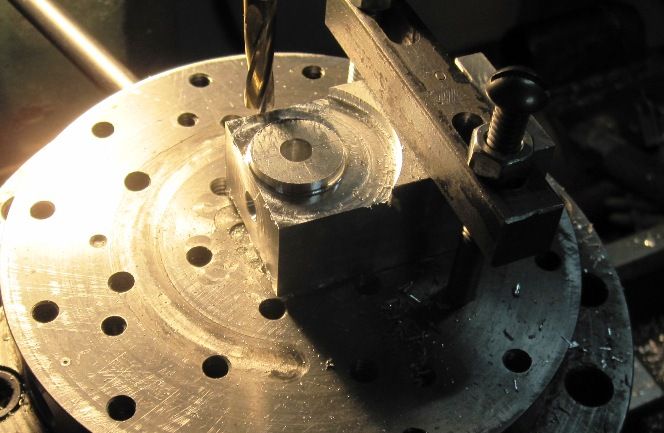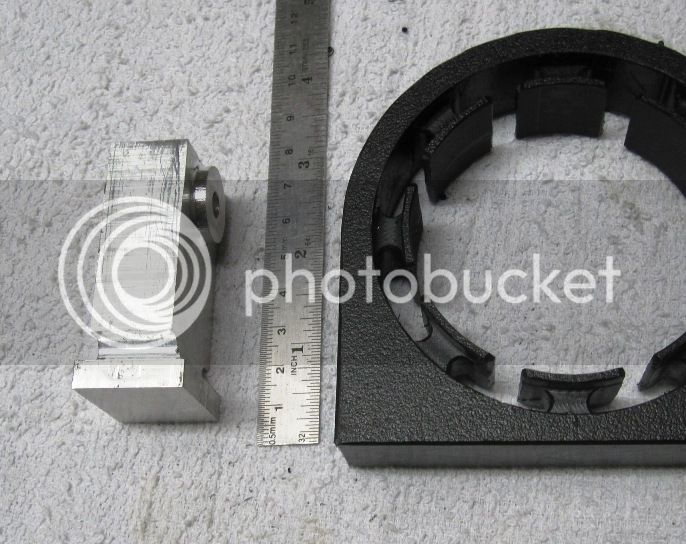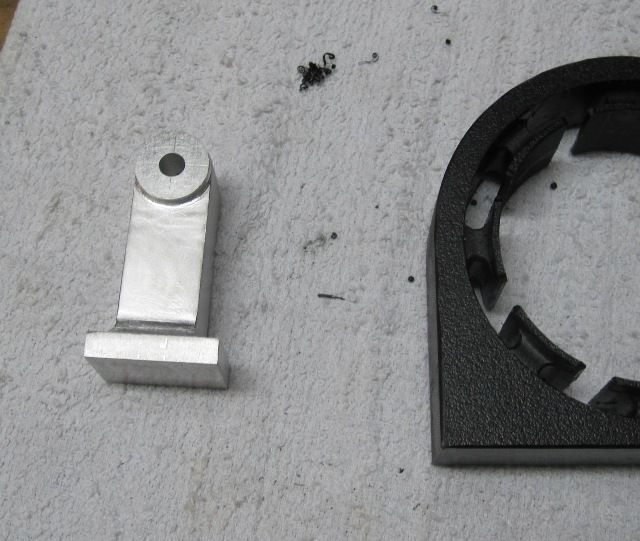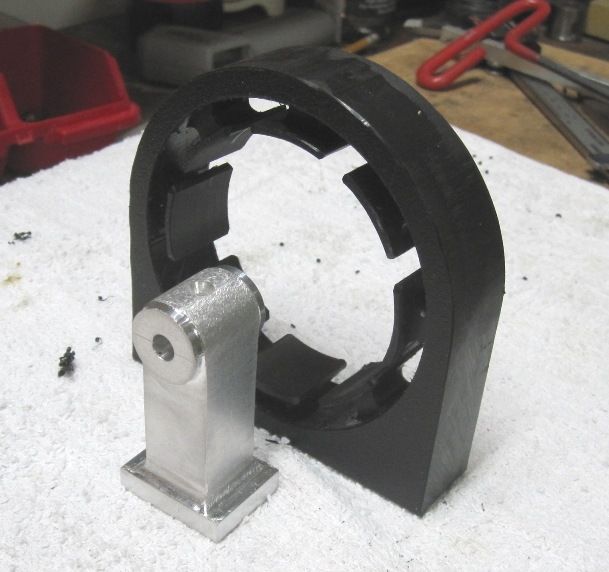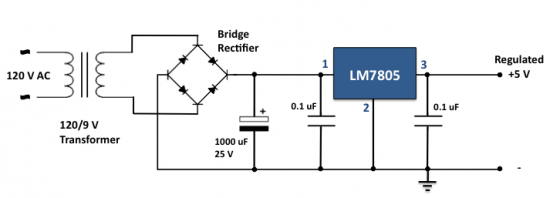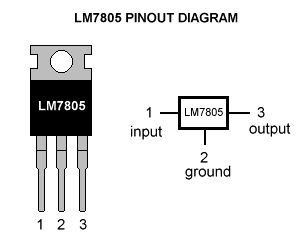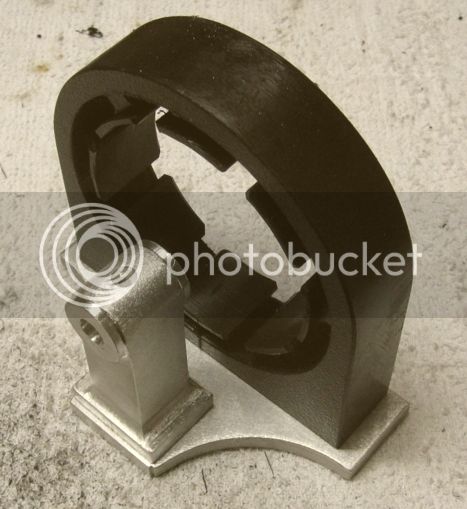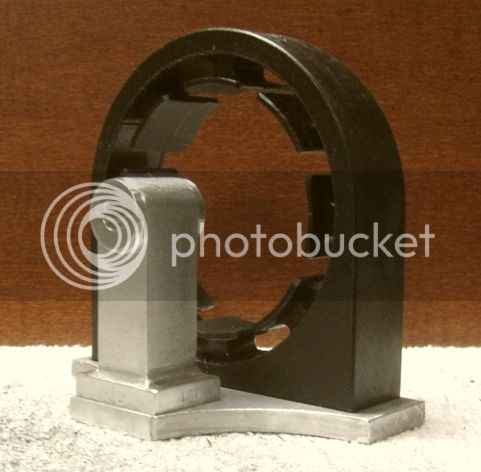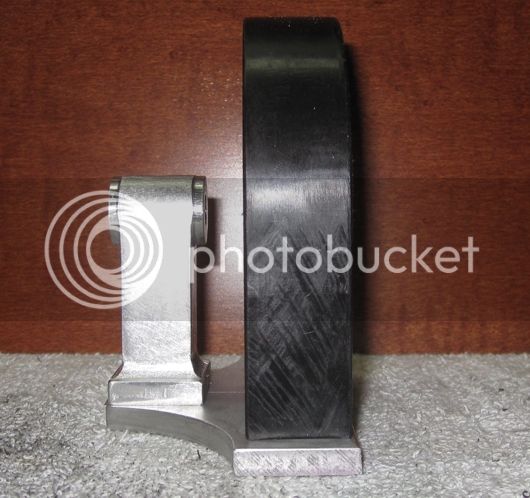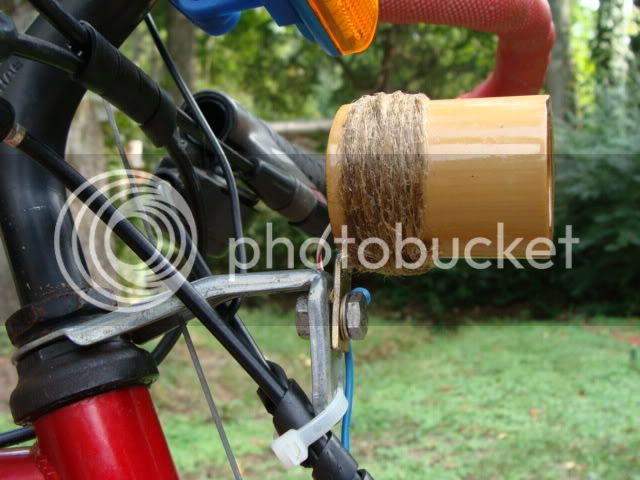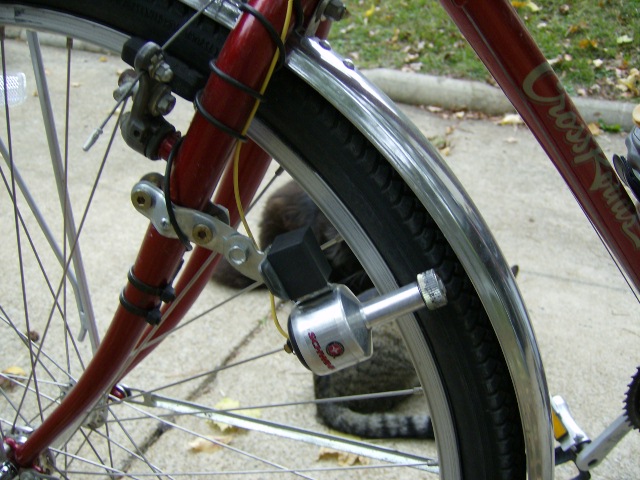- Joined
- Aug 25, 2007
- Messages
- 3,890
- Reaction score
- 715

Here's a hint...

It's going to be an air core dynamo, obviously. I started with a 4" square piece of 1" thick, HDPE (High Density Polyethylene). Also sometimes called Seaboard.

It's used a lot in the boating industry. It's pretty rigid, but does have some give to it. Machines like a dream. I decided to make the core out of plastic since it won't put out a lot of power and, more importantly, the Fairbanks compressed air engine should have enough power to run it and light up a few LED's. Here I'm drilling a 1/4" hole in the center
.

Next I cut circular grooves on both sides. These grooves will form the coil winding channel.

I changed rotary tables and started whittling away everything that didn't look like a dynamo core.

This will be a single phase AC alternator. I used a lot of the information provided by Manfred Albert, here:
http://www.homemodelenginemachinist.com/f23/dynamo-build-castings-17756/
I'll be using #24 magnet wire, hoping to get 60 or 70 turns per coil. They will all be hooked in series. Not all sure what kind of voltage and current I'll get out of this thing, but since LED's will run on about 3 volts or less, I think it will be sufficient.
Chuck





